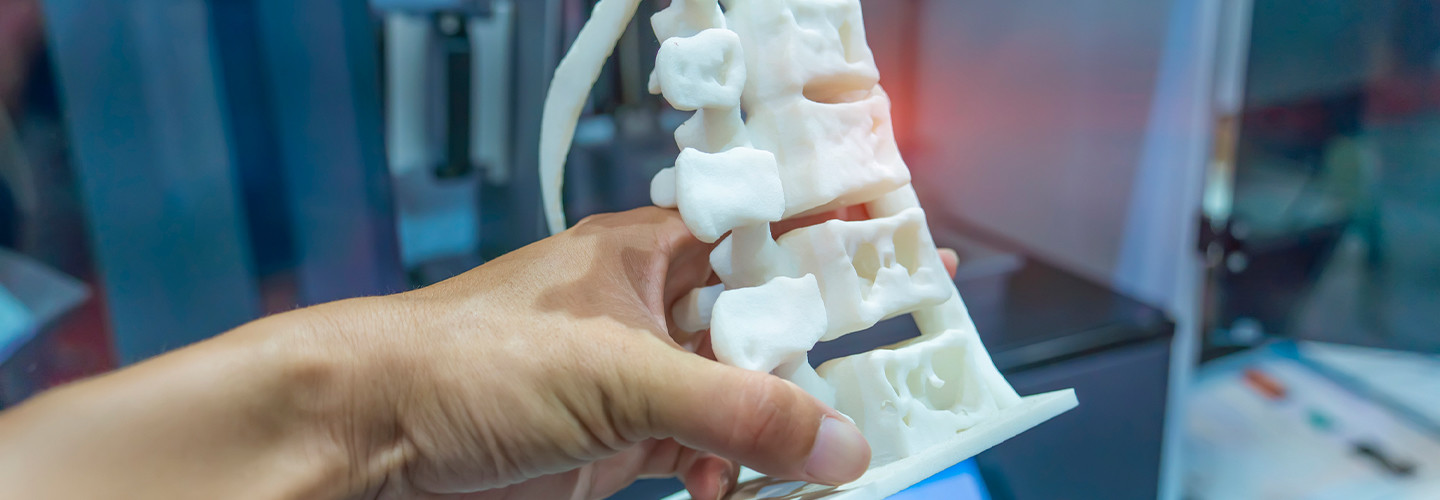
3D printing has emerged as a transformative technology in healthcare in recent years. The number of U.S. hospitals with centralized 3D printing facilities for point-of-care manufacturing has exploded, from just three in 2010 to 113 in 2019.
With 3D printers now capable of making objects measured in microns, or millionths of a meter, the technology has led to “new designs that before were impossible,” says Joseph DeSimone, professor of translational medicine and chemical engineering at Stanford University and co-founder of the digital manufacturing company Carbon.
Healthcare institutions still face challenges with reimbursement and regulation of the quickly evolving technology, according to the American Hospital Association. But even amid regulatory ambiguity, “there’s increasing pull from the healthcare industry” for more 3D printing innovations, DeSimone says.
Here are some current use cases and possible future uses for medical 3D printing.
DISCOVER: Expert guidance can help health systems manage their print environment.
Today’s Medical 3D Printing Use Cases
Made to Order: 3D printing has enabled bespoke digital manufacturing, products that can be made to fit a patient’s specific needs and anatomy. “One way that 3D printing is advancing the field of healthcare is its ability to make things that are specific and matched to a patient,” says Megan Malara, director of the Medical Modeling, Materials and Manufacturing (M4) Division at The Ohio State University.
Customized medical devices include prosthetics and implants as well as surgical instruments. They can range from dental products (among the first medically approved uses of 3D technology) to spinal implants and hip and shoulder replacements. “The bespoke nature of 3D printing is game-changing,” DeSimone says.
Model Building: Point-of-care manufacturing involves 3D printing not only surgical tools but also anatomical models that help in surgical diagnosis and planning as well as communication with patients and surgical teams. Among surgeons who have used 3D-printed models in the U.S., 94 percent said the model was a valuable tool for presurgical planning.
At The Ohio State University, the M4 Division uses 2D CT and MRI scans to build a 3D representation of the relevant part of a patient’s anatomy. The team then prints 3D models that can re-create the current anatomy and represent the postsurgical goal. As a result, the surgeon holds a physical model rather than relying on a representation on a flat screen.
“Surgeons are very tactile, so the ability to have something in their hands to plan their approach and communicate with the rest of the surgical team is a really valuable tool,” Malara says.
This capability has been especially helpful when planning surgery on the small bodies of children and infants, Malara says. “A lot of children’s hospitals leverage 3D printing because the scale and the issues that come with newborn babies are often very complex and unique.”
Click the banner to discover how health IT solutions create an integrated care experience.
The Future Potential of 3D Printing in Healthcare
New Products, New Materials: For now, most 3D-printed implants are made of metal. In the future, 3D printing could enable the creation of implants with high-performance polymers. Healthcare institutions will be able to leverage 3D printing to quickly prototype and manufacture these products, avoiding the more expensive tools of injection molding. “3D printing is great for rapid prototyping. You can go through an iterative design process more quickly and cheaply,” Malara says.
Biodegradable Products: Medical innovators have been working on 3D-printed medical products that can dissolve in the body after they’ve served their purpose. 3D-printed stents, for example, can gradually disappear over time, without having to be surgically removed. This will be especially useful in pediatric care, DeSimone says.
Bioprinting: Bioprinting uses 3D printing technology to build artificial body parts out of materials that incorporate viable living cells. This could lead to the on-demand production of living body tissue, bones and organs. Rather than harvesting a replacement from elsewhere in the body, using cadaver tissue or employing fully metal implants, surgical teams in the future might 3D print a tissue-engineered replacement part.
MORE FROM HEALTHTECH: How are digital twins used in healthcare?
Microneedles: High-resolution 3D printing can create microneedles with complex geometries otherwise not possible, enabling more effective vaccinations. A 3D-printed microneedle developed by the DeSimone Research Group at Stanford and the University of North Carolina at Chapel Hill has been shown to achieve an immune response 10 times greater than vaccines delivered in the arm muscle and 50 times greater than vaccines delivered under the skin.
Microfluidics: Microfluidics involves micro-sized devices on which tiny amounts of liquid flow through channels and tunnels. Researchers use microfluidics to develop new drugs, for instance; the technology is also used diagnostically, such as in at-home test kits for COVID-19. But many advanced microfluidic applications rely on chemical reactions at specific temperatures, requiring costly materials and manufacturing. Recently, an MIT team used 3D printing to create microfluidic devices with built-in heating elements without needing an expensive lab.
“3D printing is an exciting intersection of material science, computational analysis and bioengineering,” DeSimone says. At that intersection, forward-thinking surgeons, scientists and engineers will continue to explore the technology’s vast potential.


